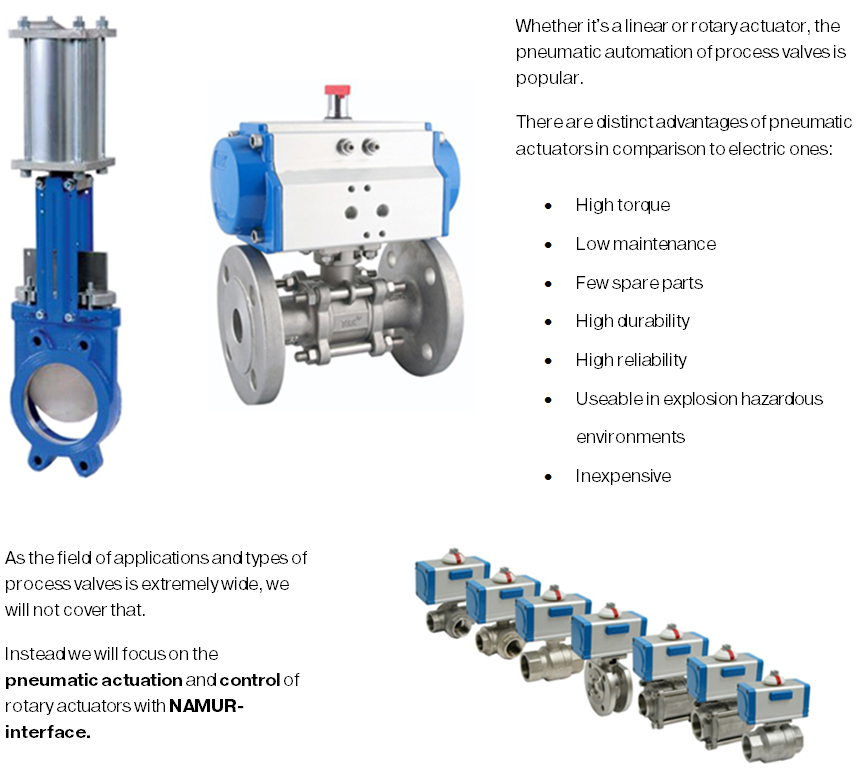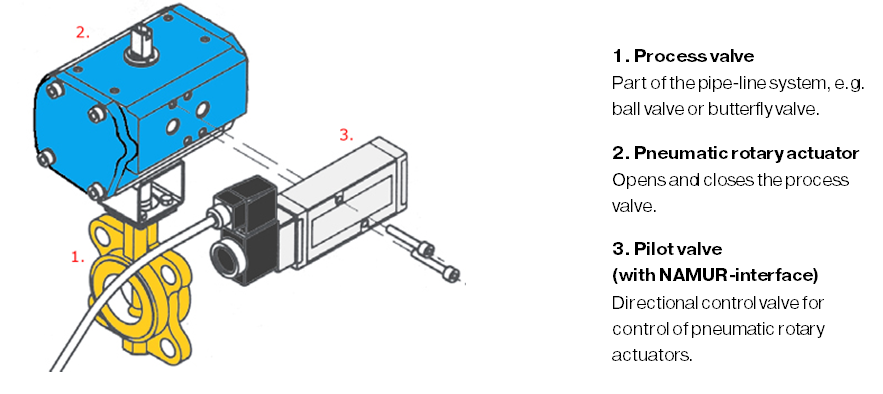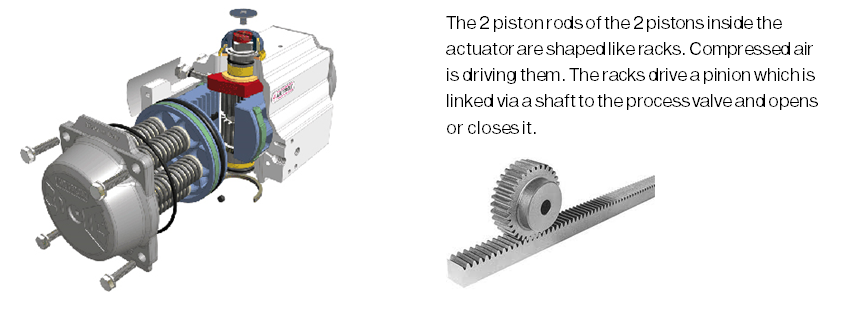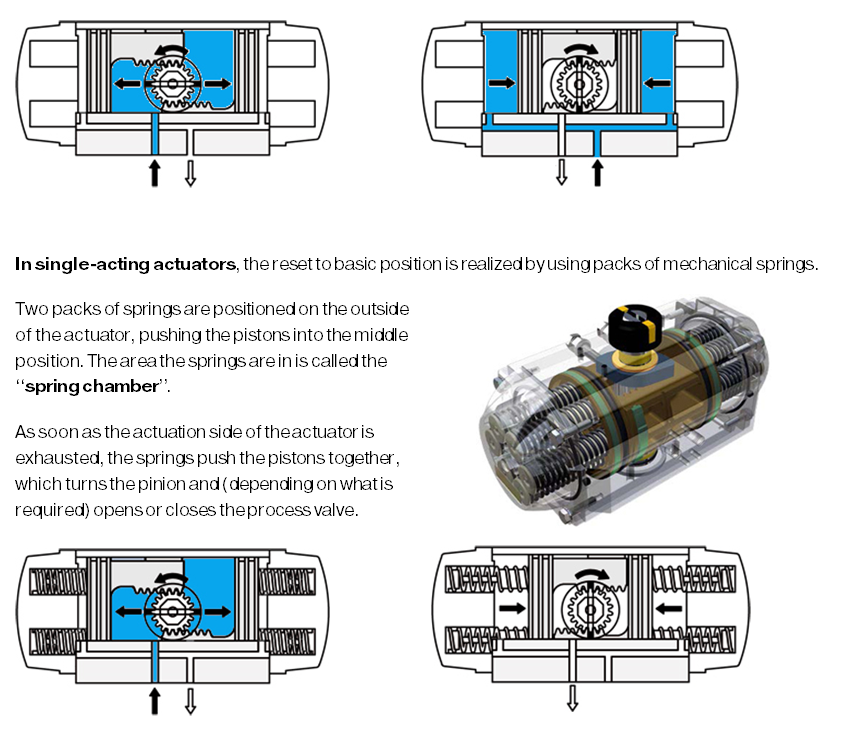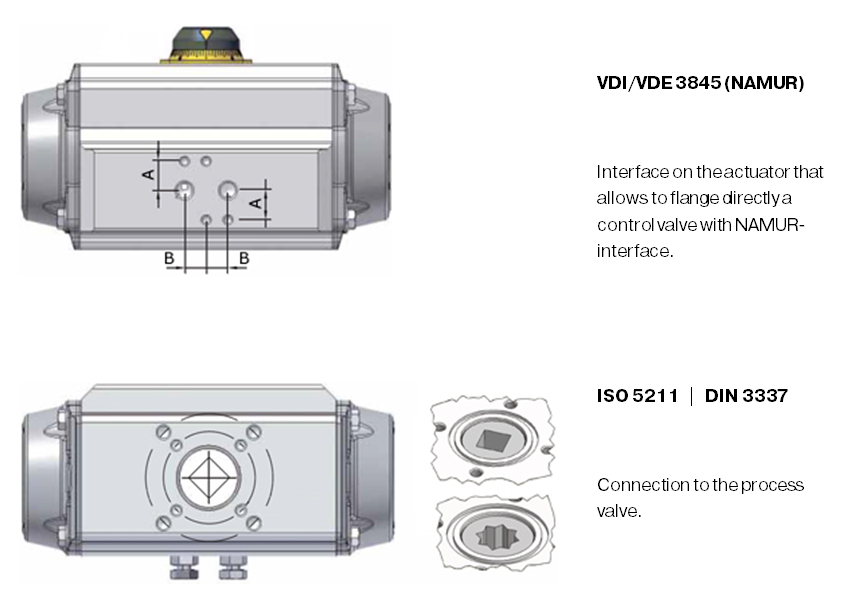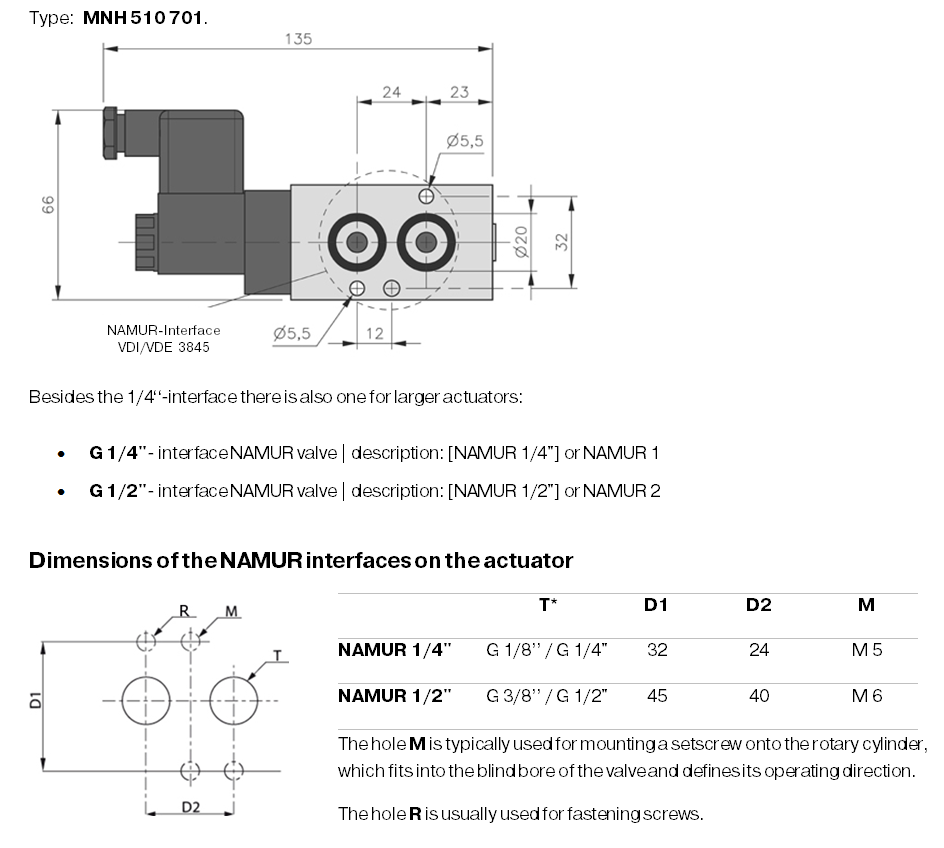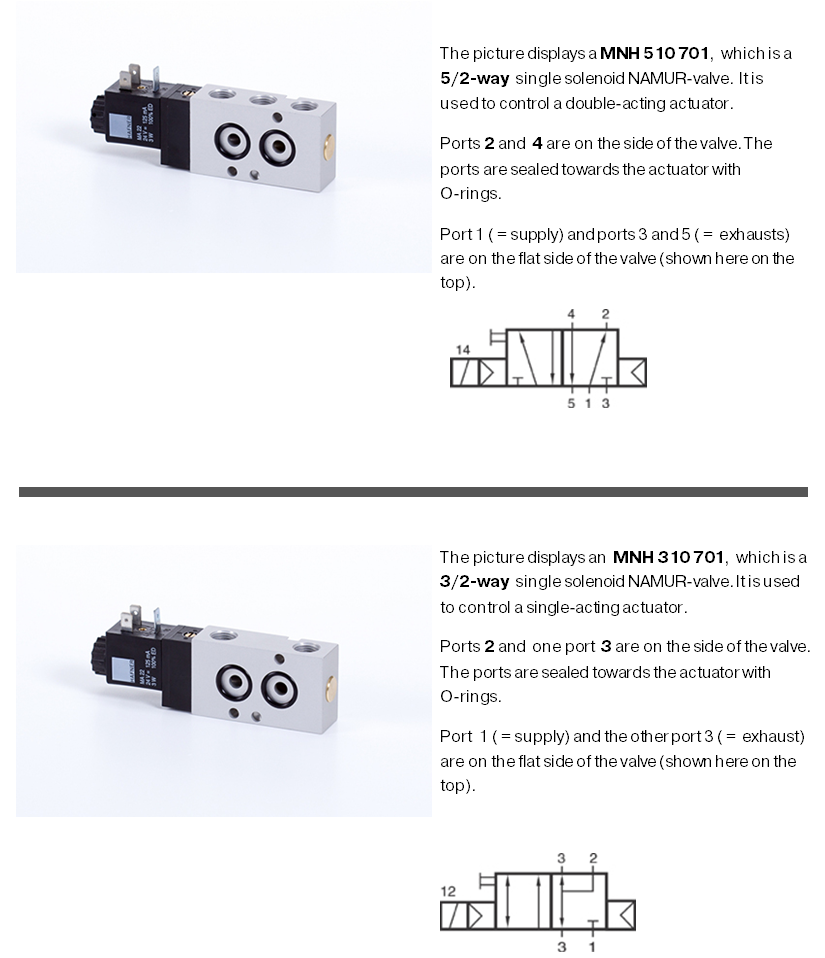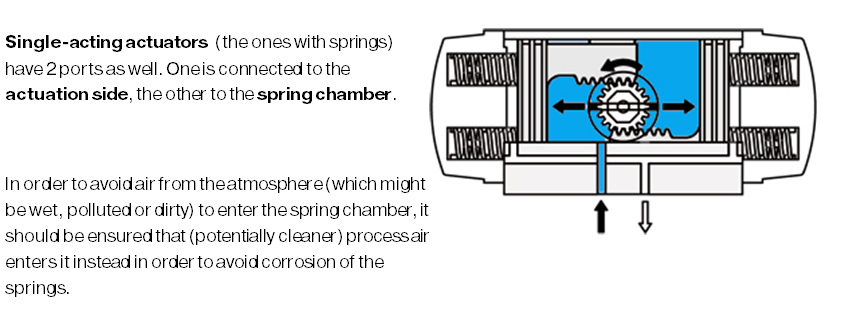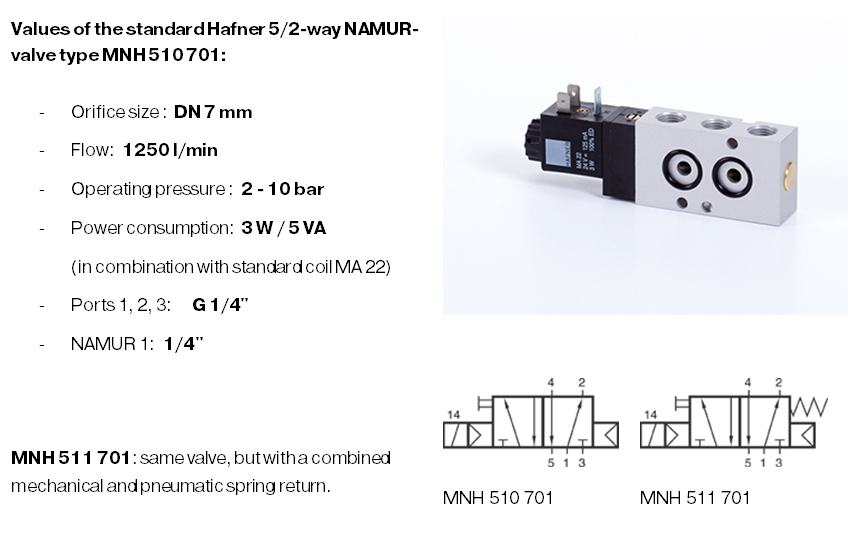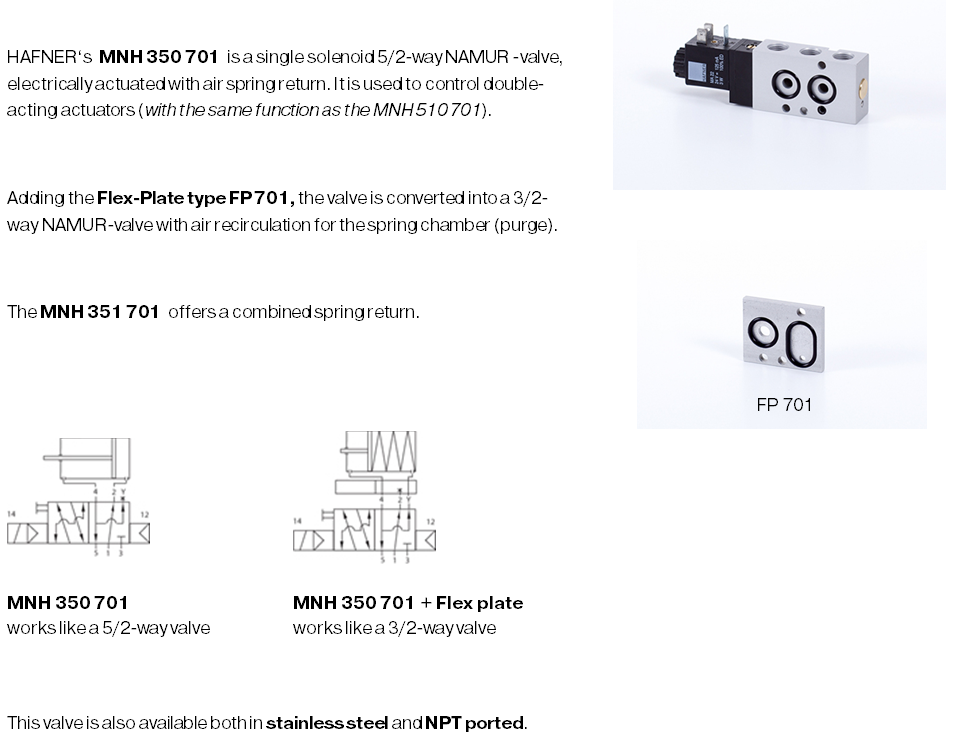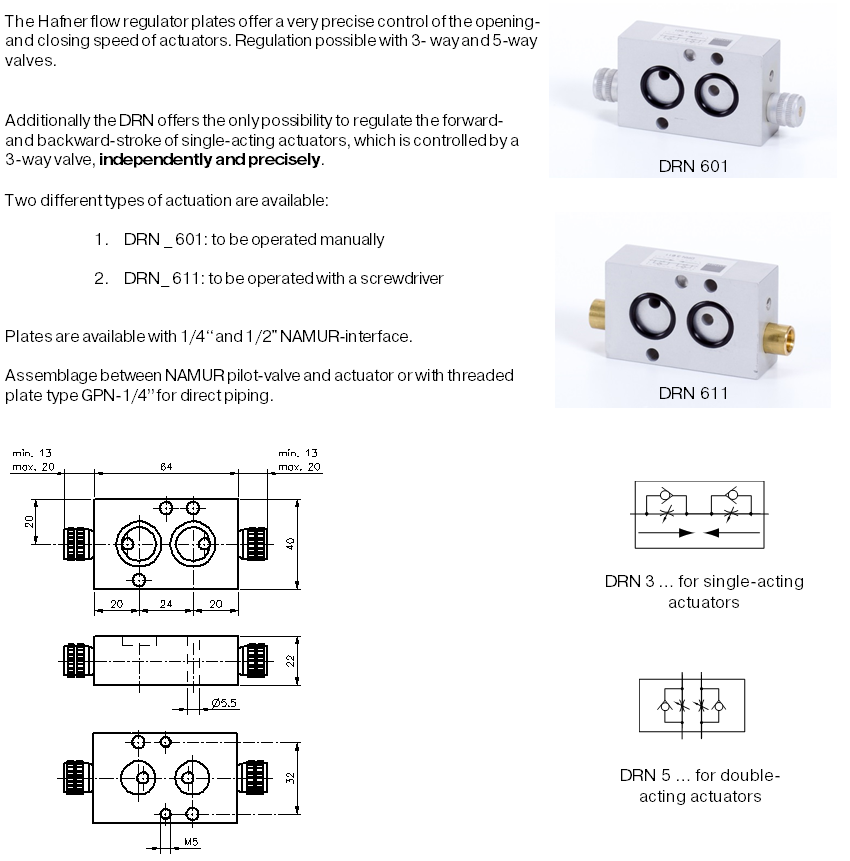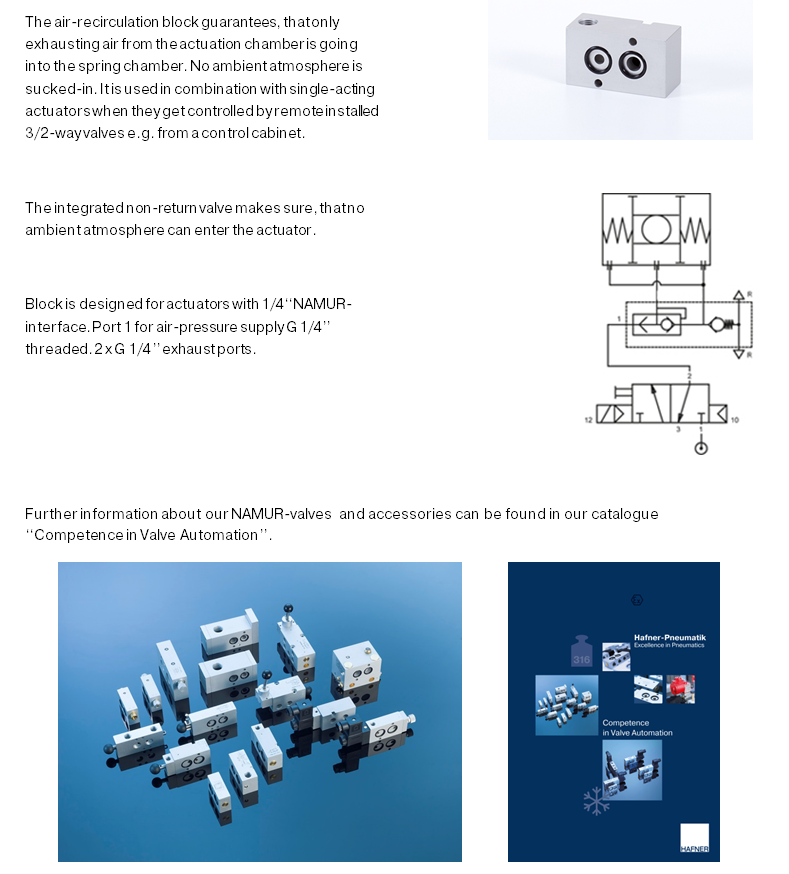Chapter 11 - Valves and Actuators with the NAMUR-interface
Valves with NAMUR-interface to control process valves
1. Pneumatic actuation of process valves
Process valves can be actuated manually, electrically, pneumatically and hydraulically. Often times pneumatic actuators are in use when it comes to automated process valves. They are mostly either linear actuators (pneumatic cylinders) or rotary actuators.
A pneumatically automated process valve has three main parts:
Further important elements can be:
- Switch-box to feed the position of the process valve back to a central command,
- Manual override – clutch for emergencies or
- Positioner, replacing the switch-box and mostly including the control valve.
2. Pneumatic rotary actuators
The design and dimensions of rotary actuators differ from manufacturer to manufacturer. The two most popular designs are either Scotch-Yoke or Rack and Pinion actuators. We will introduce you to the Rack and Pinion actuator with more detail.
The selected size of the actuator depends on the force required to open and close the process valve. Usually the manufacturer indicates the maximum torque the actuator offers at a specific pressure.
There are two versions of linear actuators:
- Double-acting actuators
- Single-acting actuators (with mechanic spring return)
In double acting actuators - depending on the direction required - compressed air flows to the outside or to the inside of the two pistons. This can be easily controlled by using 5-way directional control valves (5/2-way for fully opening and closing the process valve, 5/3-way if intermediate positions are required).
There are standards for the contact interfaces of a rotary actuator, e.g.:
- Contact interface to the control valve | VDI/VDE 3845 (NAMUR)
- Contact interface to the process valve | ISO 5211 | DIN 3337
3. The NAMUR-interface
NAMUR-valves are control valves which offer an assemblage interface according to the standard VDI/VDE 3845.
NAMUR-valves are different from other in-line valves as they offer two ports on the flat side of the valve. In addition, there are holes for fixing the valve onto the actuator.
The drawing below shows a single solenoid 5/2-way valve with an interface according to NAMUR. The dimensions of the 1/4” -interface, among others, are shown as well.
A normal 3/2-way inline valve has 3 ports. The 3-way NAMUR-valve on the photo however has 4, which you can also see on its ISO symbol. WHY IS THAT?
That is why in process automation, we aim towards an air recirculation into the spring chamber, also called a “purge”.
By feeding process air into the spring chambers, we want to reduce pollution inside the actuator due to dirt, dust, mist, moisture etc. that might have been sucked into the spring chambers and thus avoid corrosion of the springs.
4. HAFNER valves with NAMUR-interface
HAFNER Pneumatik offers a uniquely wide range of valves with NAMUR-interface, as well as a range of accessories.
- Solenoid valves | 3/2- (n.c. / n.o.), 5/2- and 5/3-way
- Pneumatically actuated valves | 3/2-, 5/2- and 5/3-way
- Hand lever valves | 3/2-, 5/2- and 5/3-way
- Everything mentioned above both in NAMUR 1 and NAMUR 2
- Numerous products made of stainless steel, for cold and for explosion-hazardous environments
- Flow-regulator plates
- Quick-exhaust valves and „purge-blocks“
- Numerous safety valves (manually, pneumatically or electrically actuated)
- Plates and accessories
HAFNER does not only offer standard products but also offers:
- NAMUR Flex | 5/2-way valve with a kit to convert it into a 3/2-way valve with air recirculation
- Stainless steel valves | made from 1.4404 (316L)
- Low temperature valves | -50°C to +50°C
- High temperature valves | -20°C to +80°C
- BSP or NPT ported
- ATEX-certified products for explosion-hazardous environment
- Specially selected materials | brass-free products
- Products with air springs or combined springs
- Products with swapped ports
- Products with different types of manual override
Standard sizes of HAFNER NAMUR-valves:
Series 701| orifice: 7 mm | flow: 1250 l/min | ports: G 1/4" – 1/4" NPT | NAMUR 1, 1/4"
Series 101| orifice: 10 mm | flow: 2250 l/min | ports: G 3/8" | NAMUR 1, 1/4" à maximized air-flow
Series 121| orifice: 12 mm | flow: 3000 l/min | ports: G 1/2" – 1/2" NPT | NAMUR 2, 1/2"
Conforming to standards, the flow measurement is shown as nominal flow in [l/min]. Nominal flow: at p1= 6 bar, p = 1 bar, stream-value of the compressed air (l/min).
Besides maximum flow of 1.250 l/min in a compact design there are 10 more competitive advantages of the Hafner NAMUR-valves series 701.
1. PA fixing nut, which protects the solenoid system from wetness and moisture.
2. Coil MA 22 fully covered with PA or Epoxy (on request), 360° rotatable. Others (Ex-versions) available on request.
3. Brass operator tube, including O-ring to protect solenoid system from wetness from the bottom.
4. Head made from PA.
5. Brass manual override for turning; other versions and materials (e.g. stainless steel) on request.
6. Spool made of stainless steel; other inner parts are: brass, POM, NBR, FKM.
7. Fixing screws, stainless steel.
8. Body, anodized aluminum.
9. End-cap made from brass.
10. Unique sealing system, the HAFNER swimming O-Ring.
5. Selection of Hafner NAMUR-Accessories
MNH 350 701: HAFNER NAMUR-Flex valve
DRN…: Flow regulator plates
UB 701: NAMUR Air-recirculation block

